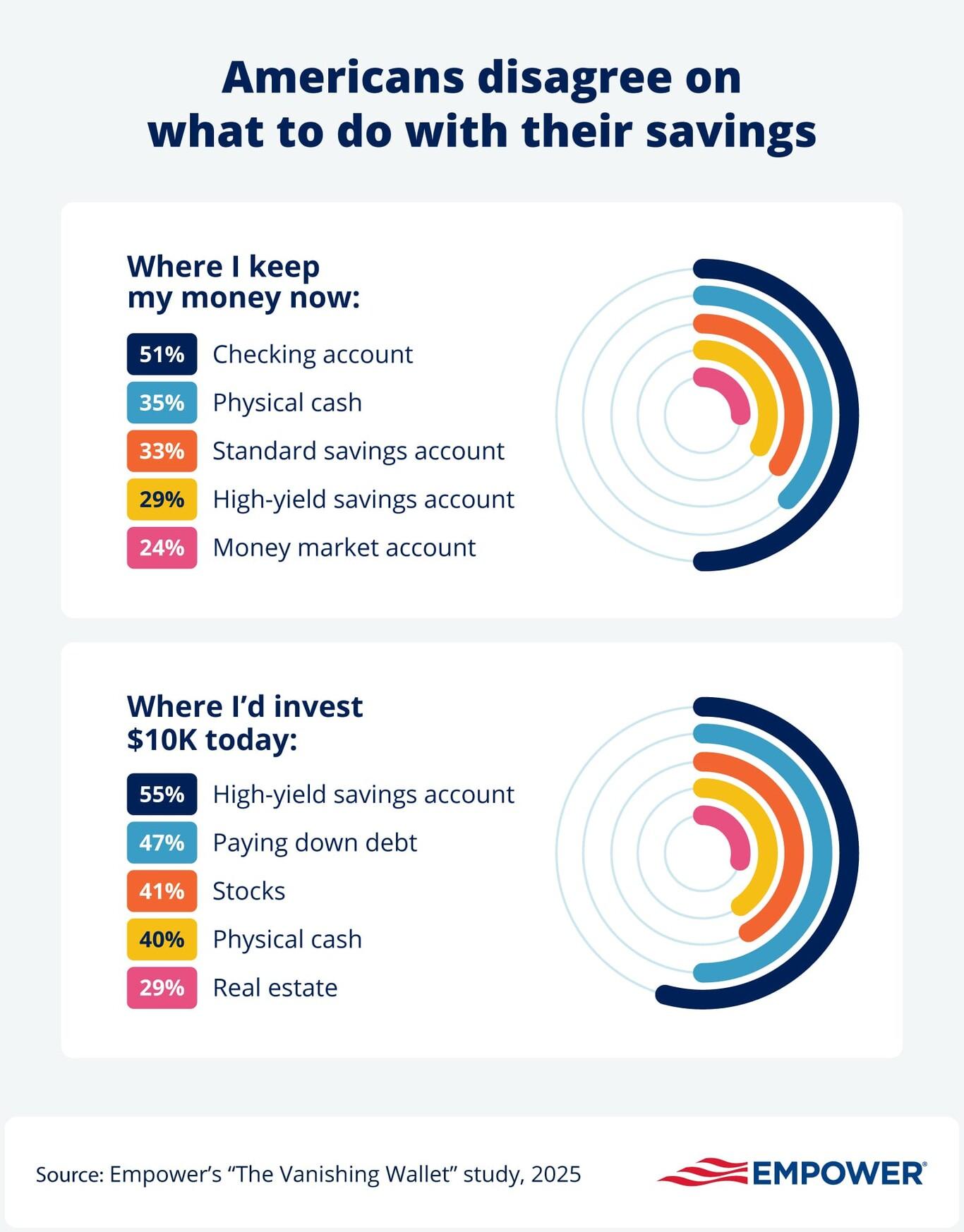The Currency
Some Americans keep cash on hand as part of their financial backup plan, and here’s where cash stands as part of their overall savings strategy, according to Empower research:
Some Americans keep cash on hand as part of their financial backup plan, and here’s where cash stands as part of their overall savings strategy, according to Empower research:
What is a safe harbor 401(k)?
Work
Theme Slug
category--work
Pathauto Slug
work
Learn how a safe harbor 401(k) works, its benefits for employers and employees, and how it helps satisfy IRS nondiscrimination testing requirements.
What are the benefits of an HSA Account?
Life
Theme Slug
category--life
Pathauto Slug
life
A health savings account (HSA) offers tax advantages, flexibility, and long-term financial benefits for healthcare planning.
Americans to spend $60 billion on fitness in 2026
Life
Theme Slug
category--life
Pathauto Slug
life
Americans increasingly see fitness as an essential investment in themselves and are projected to put $60B collectively behind achieving their goals in 2026.
















